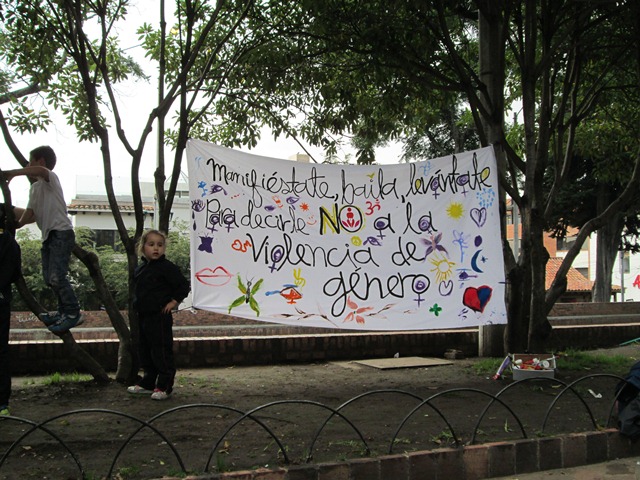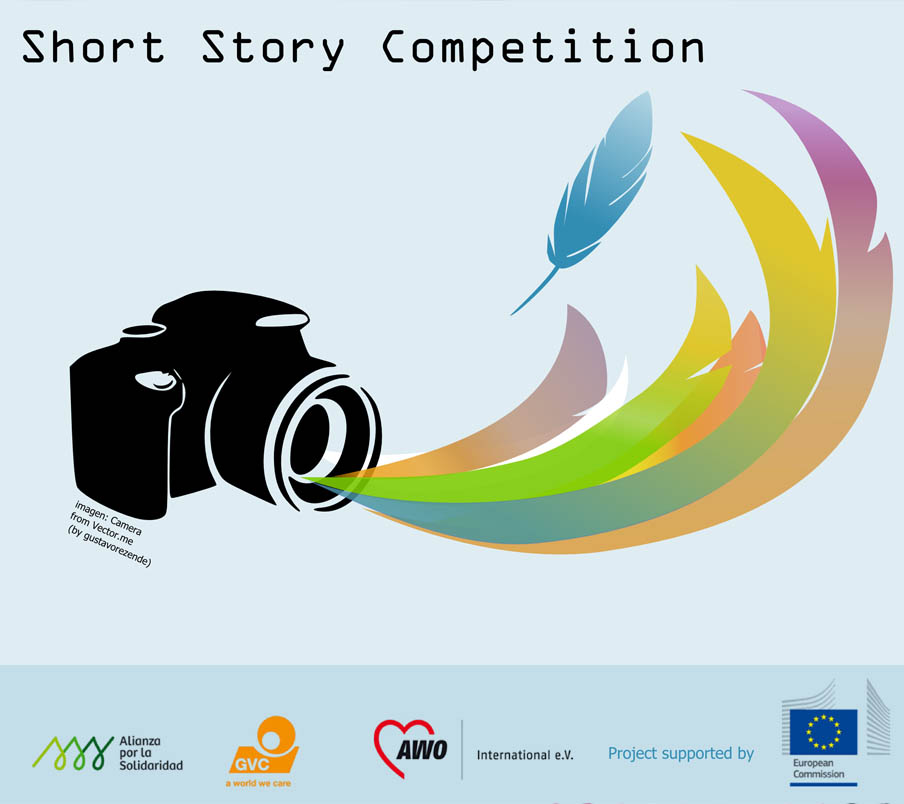Ramblings on Humanitarian A… AdministrationHablamos sobre A… Administración Humanitaria
What is the first thing that comes to your mind when you think of Humanitarian Action?
If you live far away from any place where humanitarian aid is needed, the picture you have would be heavily influenced by the charity campaigns of the organizations that work in this field: Pictures of hungry children with big eyes, friendly people in shirts covered in Logos of known organizations, handing over sacks of rice or supervising the construction of infrastructure… Although there has been more consciousness and quite a change over the last years in the depiction of the beneficiaries, these pictures still dominate the minds of many people. But that’s a different story.
What I’m getting at is this: These days, the first thing that comes to MY mind are pictures of huge stacks of papers, folders and folders and folders of personal documentation. Huge excel sheets with so many colors and functions it makes my head spin. Hours and hours in front of the computer, digitizing data. Contracts and more contracts. Insurance policies. Do I need to go on? Or do you get the picture?
My guess is that many of you made similar experiences. I’m not saying that I’m not learning a lot about humanitarian action these days. I actually have a clearer view on how it actually works than ever before. There is a lot more to it than meets the eye, that’s for sure. So to all of you that sit in front of excel sheets, are brooding over project proposals, chewing their nails and pulling their hair over reports on meetings and workshops: DO NOT DESPAIR! Without Administration, there would be no projects. We are contributing to the overall cause, and that’s what counts!
An ever present point of critique on humanitarian action is the high administrative costs, which usually range between 10% and 20% of the overall budget. Well, you can’t expect absolute accountability and transparency on one hand and then complain about the costs of it. We are obliged to account for every peso we spend, and our status as a foreign organization means that we have to stick to the law up to the last footnote of the footnote. And that’s how it should be; there should be no space for doubt on how the NGOs spend their money.
Well, nobody ever said it was easy!
Mucho animo! Julia
Ps: I do would like to add that these examples are of course only PART of my work here! I do get to leave the office and go to the projects 🙂
¿Qué es lo primero que viene a la mente cuando se piensa en Acción Humanitaria?
Si uno vive muy lejos de lugares donde se necesita ayuda humanitaria, la imagen que se tiene estará fuertemente influenciado por las campañas de donaciones de las organizaciones que trabajan en este campo: fotos de niños hambrientos con ojos grandes, gente amable con camisas cubiertas de logos de las organizaciones conocidas, se les ve entregando sacos de arroz o supervisando la construcción de infraestructura … Aunque se ha visto la mejora de conciencia y algo de cambio en los últimos años en la representación de los beneficiarios, estas imágenes siguen dominando las mentes de muchas personas. Pero eso es un tema diferente.
Lo que estoy diciendo es esto: En estos días, lo primero que me viene a la mente son imágenes de enormes montones de papeles, carpetas y carpetas y carpetas de documentación de personal. Grandes hojas de cálculo de Excel con tantos colores y funciones que hace girar mi cabeza. Horas y horas en frente de la computadora, digitalizando datos. Contratos y más contratos, pólizas de seguro… ¿Tengo que seguir? ¿O ya me entienden?
Supongo que muchos de ustedes han tenido experiencias similares. No estoy diciendo que no estoy aprendiendo mucho sobre la acción humanitaria en estos días. De hecho, tengo una imagen más claro de cómo funciona en realidad, como nunca lo he tenido antes. Hay mucho más de lo que parece a primera vista, eso es seguro. Así que para tod@s los que están sentad@s delante de las hojas de Excel, están meditando sobre las propuestas de proyectos, masticando las uñas y tirándose de los pelos por informes sobre las reuniones y talleres: NO SE DESESPEREN! Sin la administración, no habría proyectos. Estamos contribuyendo a la causa principal, ¡y eso es lo que cuenta!
Un punto de crítica siempre presente son los altos costos administrativos en acción humanitaria, que suelen oscilar entre el 10% y el 20% del presupuesto total. Bueno, no se puede exigir rendición de cuentas y transparencia absoluta en un lado y luego quejarse de los costes de las mismas. Estamos obligados a responder por cada peso que gastamos, y nuestro estatus como organización extranjera significa que tenemos que cumplir con la ley hasta la última nota de la nota de pie de página. Y así es como debe ser, no debe haber espacio para la duda sobre cómo las ONG gastan su dinero.
Bueno, nadie dijo que sería fácil!
Mucho ánimo! Julia
P: Yo quisiera añadir que estos ejemplos forman, por supuesto, sólo una parte de mi trabajo aquí! A veces sí salgo de la oficina 🙂














